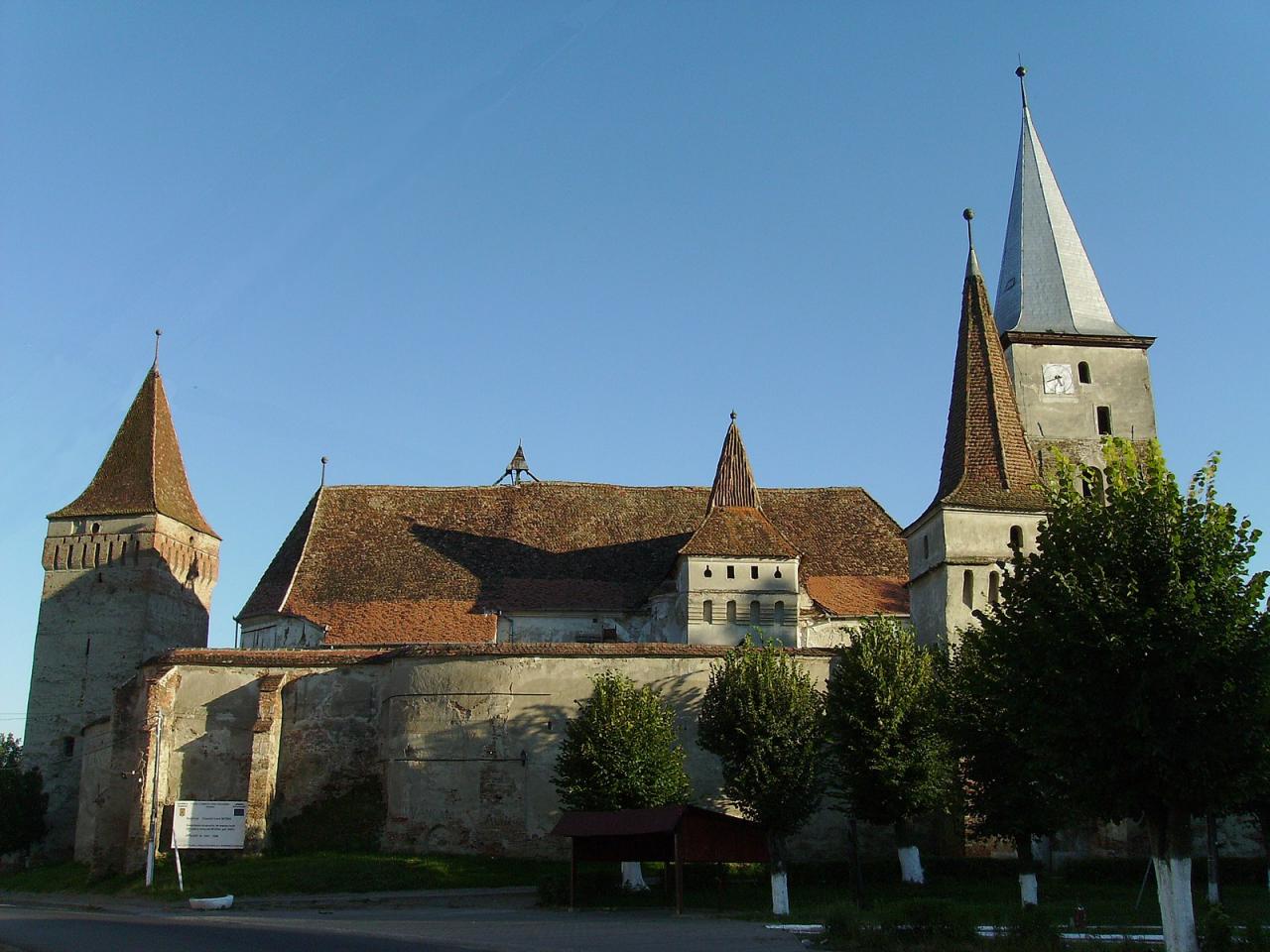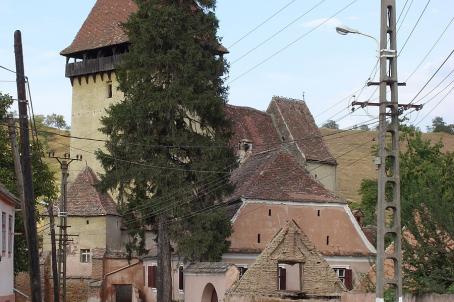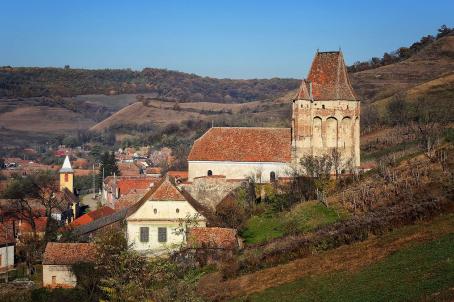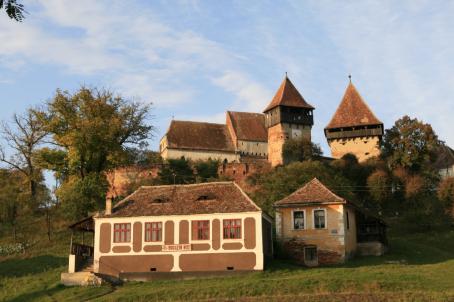Moşna Fortified Church

From the first church built in the 14th century the western portal is preserved, as well as stones used to build the eastern pairs of pillars in the hall church from 15th century. The construction of the new church, whose size and architecture are testimony of the importance of the settlement, was accompanied by extensive measures to fortify the assembly: a defence level was added to the chancel, the northern and southern entrances were strengthened by towers provided with loop holes. A parapet walk on arches was built on the curtain wall, as well as several defence towers and an outer bailey, which is divided in two parts and protected by a small watchtower.
The interior of the church impresses due to its dimensions and excellent sculptures, as well as the Gothic lierne vault on pairs of stone pillars.
About this building
For more information visit on this building visit https://kirchenburgen.org/en/location/meschen-mosna/





